
The U.S. 10th Circuit Court of Appeals in Denver, Colorado.
The United States 10th Circuit Court of Appeals has ruled against law enforcement officers claiming Qualified Immunity in the case of Maresca v. Fuentes. The case involves a Deputy Sheriff entering the wrong license plate number into their patrol car’s mobile data terminal (MDT), resulting in a false alert to a stolen vehicle. The deputies performed a high risk car stop, following fairly standard procedures, including having weapons drawn and ordering the occupants out of the vehicle and onto the roadway.
Ultimately, the mistake was realized and the family that was stopped was released. The actions of the deputies before, during, and after the high risk stop will be the focus of this article, and should provide all officers with
EDITOR’S NOTE: The BlueSheepDog Crew strive to provide law enforcement officers with the tools and information they need to perform their duties smarter, and safer. This legal case review is one of those efforts. This case is presented as an informational-only article meant to provide officers with current legal precedents that effect their actions, particularly from the Federal Circuit Courts of Appeal or the Supreme Court. However, the BlueSheepDog Crew are not attorneys, and this article should not be considered as legal advice. We recommend officers familiarize themselves with the particulars of this case and then review the findings with their Department legal advisor and local prosecutors for further guidance.
The Blessing and Curse of Modern Technology
Modern technology has made the job of the law enforcement officer easier, and faster in some cases, but also more difficult at the same time. With video cameras, high-speed internet, computers in patrol cars, etc. officers today have a powerful wealth of information at the tip of their fingers. This information can provide detailed information on criminal suspects, active warrants, driver license status, recent criminal activity, crime bulletins, and more. In just a few seconds an officer can have enough information on a vehicle or suspect to make a lawful stop and take official action, where previously they had no information to justify that action.
However, those very same tools can create dilemmas for the officer that can lead to unlawful actions on the officer’s part even if the officer was acting in “good faith”. How many times have you stopped or discovered an arrest warrant, only to check with the originating agency to find out that the warrant had already been served and inadvertently not taken out of the criminal records computer system? In the same regard, with high-speed internet computers in the patrol car, one simple key stroke error that is not caught can lead to the situation that is the focus of Maresca v. Fuentes.
The 10th Circuit ruling here is binding on Colorado, Utah, Wyoming, New Mexico, Oklahoma, and Kansas. However, the legal though process is sound, and as such, is extremely important to all law enforcement officers who rely on electronic or digital information as a source for legal authority for stops or arrests.
Initial Observation and Improper Records Check
On October 22, 2015, the 10th Circuit Court of Appeals decided Maresca v. Fuentes et al., providing officers instruction regarding the potential consequences of typographical errors that lead to felony stops.
On March 14, 2013 the Maresca family – Stephen Maresca, Heather Martin-Maresca, their three children (seventeen-year-old Anthony Maresca, fourteen-year-old C.M., and nine year-old M.M.), and their dog (Maya) – were returning from a family hiking trip. The family drove by Bernalillo County, New Mexico Deputy Fuentes and Deputy Grundhoffer in their red, 2004 Ford F-150 pickup truck. Deputy Fuentes did not observe any traffic law violations, and there was nothing particular about the Fuentes’s truck to draw attention. Mr. Maresca was a former police officer, and waved at Deputies Fuentes and Grundhoffer as they drove by.
Deputy Fuentes had only completed field training approximately two months earlier, so was new to police work. For no particular reason, Deputy Fuentes followed the Marescas, and used the MDT in her patrol car to enter the Marescas’ license plate number into the National Crime Information Center (NCIC) database. However, as she entered the license plate she was off by one digit. The Marescas’ license plate was “526-PLF”, but Deputy Fuentes entered “525-PLF”.
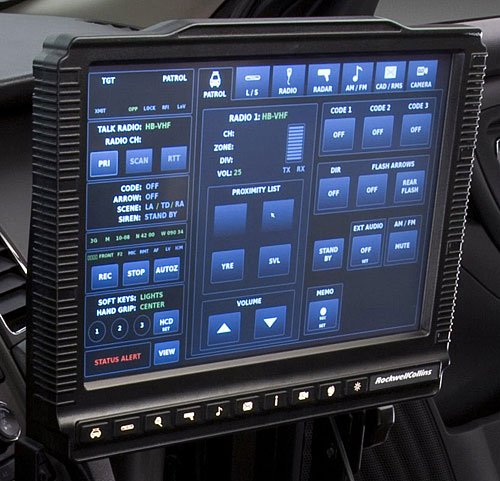
Mobile Data Terminals (MDTs) are incredible tools, but must be used correctly.
Due to improper entry of just one digit, Deputy Fuentes’s MDT returned an alert entry for a reported stolen maroon (or red), 2009 Chevrolet 4-door sedan with expired plates. Deputy Fuentes did not notice the discrepancies between the stolen car and the Marescas’ truck. The Court would note that these differences are not minor – they are material and obvious!
The stolen car in the NCIC report did not match the Marescas’ truck in:
- Color
- Type of vehicle
- Make
- Model
- Year
- License plate number
- License plate registration status.
The MDT alert also stated, “Warning – the following stolen vehicle record contains expired license plate data. Use caution, contact entering agency to confirm status.” In addition, Court documents show Bernalillo County deputies are, trained to double-check stolen vehicle reports through dispatch to verify the information in alerts before approaching a potentially stolen vehicle.
High Risk Stop
Despite the warning in the NCIC alert, and their Department training, Deputy Fuentes and Deputy Grundhoffer (in a separate patrol car) did not confirm the stolen vehicle alert before stopping the Marescas family. There is not evidence there were exigent circumstances to necessitate an immediate stop, before verifying the stolen vehicle entry.
As Deputy Fuentes made the vehicle stop, she radioed dispatch with the actual plate number, 526-PLF, but stating the vehicle was stolen. Without waiting for dispatch verification, Deputy Fuentes radioed that she was going to conduct a “felony stop.” This caused other deputies to respond to assist with the stop. Before the other deputies arrived, Deputy Fuentes and Deputy Grundhoffer, implemented “felony stop” procedures.
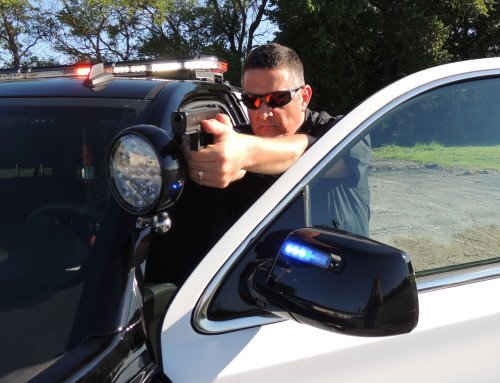
The author during high risk stop training.
The two deputies stopped behind the Marescas’ stopped truck, stood behind the open doors of their patrol cars, and aimed their weapons at the Marescas’ vehicle. The Maresca family was ordered to put their hands up in the air, and then Mr. Maresca (the driver) was ordered to turn off his truck and throw his keys out the window. Mr. Maresca was ordered to exit the truck with his hands in the air, and then to lift his shirt by the collar and turn around so the deputies could check his waistband for weapons. He was then ordered to walk backwards toward the officers and get on his knees, then lie on the highway on his stomach with his arms out and his legs up in the air. Deputy Fuentes then repeated this procedure with Mrs. Maresca. The Marescas complied with every command.
As they were lying prone on the ground, Mr. and Mrs. Maresca told the deputies there were children and a dog in the truck. Mr. Maresca further told the officers that there had to be a mistake, and both adults pleaded for deputies to double-check.
AUTHOR’S NOTE: Up to this point the deputies appear to be following fairly standard procedures for a high risk (felony) car stop. It is not uncommon for criminal suspects to make requests or accusations during arrest or stop procedures. The BlueSheepDog Crew does not recommend officers compromise procedure or safety because of these requests or accusations, which are often meant to be a distraction tactic. However, professional officers should be constantly evaluating the totality of the circumstances and be ready to raise, or lower, the level of force accordingly. This observation and change of action should be able to be initiated by any officer, and not just a senior officer or supervisor.
The deputies ignored the Marescas, and did not ask whether they owned the vehicle. In his deposition, Deputy Grundhoffer, admitted that he thought the situation was “a little weird.” Deputy Fuentes continued pointing her handgun at the Marescas’ truck even after Mr. and Mrs. Maresca were on the ground and after they told the deputies that there were children in the truck. The deputies ordered the two boys, C.M. and, and Anthony, one by one from the truck using the same “felony stop” procedures. As the officers ordered the children out one by one, Mr. Maresca told the deputies that “this does not warrant a felony stop.” Finally, Deputy Grundhoffer ordered nine-year-old M.M. to exit the truck and lift her shirt. The evidence is disputed as to whether the deputies ordered M.M. to lie on the ground with her hands behind her back or, instead, let her stand to the side, telling her not to move.
AUTHOR’S NOTE: Though the Court is paying particular attention to the high risk procedures for the children. If confronted with this resistance, officers should prepare their legal defense with the recent violent attacks on law enforcement officers by teenaged offenders. One of the most infamous and deadly attacks in recent history was committed by the 16-year old son of a Sovereign Citizen in West Memphis, Arkansas. The father-son duo had a plan to deal with being stopped by law enforcement. Unfortunately, the West Memphis officers did not view the teenager as the threat, and focused on the large and boisterous father who had been removed from the van. As the father physically attacked one of the officers in a pre-planned distraction (causing the backing officer to jump in to assist), the son exited their van with an AK-47 and murdered the two officers.
After all of the Marescas were out of the truck, Maya (the dog) became upset, jumped out of the truck, and ran into the highway. Mr. Maresca called Maya to him and the deputies permitted Mr. Maresca to hold onto the dog. Additional deputies Tonna and Lucero arrived. Because the “felony stop” was blocking much of the two-lane highway where it occurred, Deputy Lucero began trying to direct traffic around the scene, but eventually had to completely stop highway traffic.
During all of this, Deputy Swint and Deputy Quintana arrived. Although disputed, the Marescas presented evidence that Deputy Swint stood directly over fourteen-year-old C.M., as he was lying prone on the ground as ordered, and pointed a gun at C.M. This caused C.M. to cry and “freak out” for fear of being shot, even saying “Mom, they’re going to shoot us, they’re going to shoot me.”
There was also evidence, which Defendants (Deputies) disputed, that Deputy Quintana stood over Mrs. Maresca, as she was lying on the highway, and pointed his gun at her head with his finger on the trigger. All of the children were crying and Mrs. Maresca tried to talk with them to calm them down. Eventually, Deputies handcuffed each member of the Maresca family (except M.M.), and placed them in separate squad cars (M.M. was placed in a car with her mother). Deputies Fuentes and Grundhoffer then checked the Marescas’ vehicle to insure that there was no one still in the truck.
Realization of Error, Release of Maresca Family
Finally, between 7-15 minutes into the stop, Deputy Fuentes returned to her car and re-checked the Marescas’ license plate. It was then she realized that the Marescas’ truck did not match the stolen vehicle information on her computer screen. Deputy Fuentes asked Deputy Tonna whether she was going to get in trouble (uh…yes), and he told her to get the family out of the patrol cars, uncuff them, and call a Sergeant.
Sergeant Bartholf was called to the scene. He explained to Mr. and Mrs. Maresca that Deputy Fuentes was a new officer. The parties dispute whether Bartholf, or any other officer on the scene, apologized to the Marescas. Mrs. Maresca asked Deputy Quintana, in front of Sgt. Bartholf, “Why did you think it was necessary to point your gun at me when I’m already laying on the ground?” According to Mrs. Maresca, Deputy Quintana just smiled and walked away.
Suit and Appeal to the U.S. 10th Circuit Court of Appeals
The Marescas sued the officers for false arrest and excessive force. The U.S. District Court granted Qualified Immunity to the officers. The Marescas appealed to the U.S. 10th Circuit Court of Appeals. The five issues on appeal are:
- Whether the “felony stop” of the Marescas constituted an “arrest” under the 4th Amendment
- Whether the Deputy Fuentes had probable cause to arrest the Marescas
- Whether Deputy Grundhoffer was entitled to qualified immunity for relying on information provided him by Deputy Fuentes that the car was stolen
- Whether the force used by the deputies was unreasonable under the facts of this case
- Whether the Marescas suffered more than de minimus injuries from the force used by the deputies.

Issue #1: Did the “felony stop” of the Marescas constitute as an “arrest” under the 4th Amendment?
The 10th Circuit used its own precedent rulings, and those of other Circuits to establish a basis that an arrest must be based on “probable cause to believe that a person committed a crime,” and “is distinguished” from an investigative detention “by the involuntary, highly intrusive nature of the encounter.” Cortez, 478 F.3d at 1115.
An investigative detention, on the other hand, permits an officer to “stop and briefly detain a person for investigative purposes if the officer has a reasonable suspicion supported by articulable facts that criminal activity may be afoot, even if the officer lacks probable cause.” Cortez, 478 F.3d at 1115. Investigative detentions are characterized by their “limited intrusion on the personal security of the suspect.” Florida v. Royer, 460 U.S. 491, 500 (1983).
In the case of Maresca v. Fuentes the 10th Circuit stated, the use of firearms, handcuffs, and other forceful techniques does not necessarily transform a Terry detention (investigative detention) into a full custodial arrest,” Melendez-Garcia, 28 F.3d at 1052. However, this distinction is viewed “when the circumstances reasonably warrant such measures” in order for the officers to conduct an investigative detention safely, United States v. Shareef, 100 F.3d 1491, 1495-99, 1506 (10th Cir. 1996).
As the court noted, there are times when officers can use felony stop tactics and it does not amount to an arrest. The 10th Circuit examined two cases in confirming this doctrine. The first, United States v. Shareef, officers displayed firearms, removed the occupants from their car, frisked and handcuffed them. The Court ruled this action did not transform the stop into an arrest, because the officers “reasonably” suspected one of the motorists as armed and dangerous.
Additionally, the Court discussed United States v. Perdue, where officers removed two occupants from a vehicle at gunpoint and ordered them to lie on the ground. The Court ruled the officers had a reasonable belief that the occupants were armed and dangerous. In both cases the 10th Circuit affirmed that these police actions were reasonable under the Terry stop doctrine in consideration of the 4th Amendment.
The 10th Circuit applied those principles to the facts of the Marescas’ case. The court noted the following facts:
- The Marescas complied with all the officer’s commands.
- There was nothing to indicate that the Marescas were armed and dangerous, and had Officer Fuentes confirmed the license plate, she would have seen that nothing indicated a problem with their vehicle.
- They were still all brought out the car at gunpoint, and notably, even the children, were made to lie on the ground, handcuffed and placed in separate patrol cars.
The court then held that this action did go beyond a normal Terry stop and transformed the encounter into an arrest, since the officers had no reasonable basis for believing the Maresca’s were armed and dangerous (which reasonable belief could have kept this incident at the level of investigative detention).
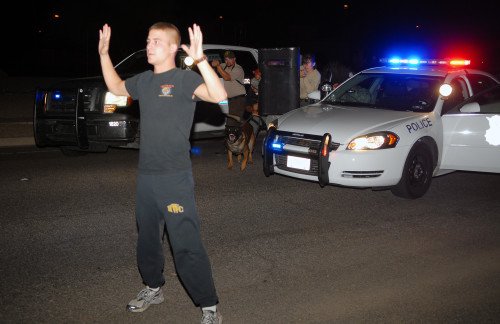
Air Force Security Forces train on high risk stop procedures (photo by luke.af.mil)
Issue Two: Did Deputy Fuentes have probable cause to arrest the Maresca’s?
As consistently noted by Federal Courts, probable cause exists only when the totality of the circumstances, “facts available to the officers at the moment of the arrest would warrant a [person] of reasonable caution in the belief that an offense has been committed.” Beck v. Ohio, 379 U.S. 89, 96 (1964). For purposes of Qualified Immunity (what the deputies sought in defense) the Court must examine “whether an objectively reasonable officer could conclude that the historical facts at the time of the arrest amounted to probable cause.” Cortez, 478 F.3d at 1116. The Courts generally expect of police conduct, is not that they always be correct, but that they always be reasonable. Illinois v. Rodriguez, 497 U.S. 177, 185 (1990).
The Court did not suggest that officers must always double-check database hits or await accuracy confirmations from dispatch, as there are circumstances that would justify a reasonably prudent officer’s decision to bypass such steps. However, in the circumstances of this case, which did not reveal any likely threat to the arresting officers or any need for immediate action preventing verification, a reasonable officer would be expected to confirm the accuracy of her information, especially in light of the differences between the stolen vehicle description and the Marescas’s vehicle.
In a civil case, officers are required, for the purpose of Qualified Immunity, to have reasonably believed that probable cause was present. Some Federal Circuits refer to this as “arguable probable cause.” However, in the Maresca’s case, the 10th Circuit noted that the deputy did not act reasonably in believing that probable cause was present, because it was the wrong entry the deputy entered into her computer, and her failure to recognize the differences that led to the arrest.
The Court held that a mere typing error in entering a license plate number will not make it unreasonable for the officer to rely on the result of the database inquiry, recognizing the often unpredictable and fast-paced context of traffic stops. This is good for law enforcement as the requirement is not perfect, but instead “reasonableness”.
However, in the Maresca case the Court ruled it was unreasonable for Fuentes to arrest the Marescas based upon all the circumstances of the case, in particular, Fuentes’s failure to use readily available information-already on the computer screen in front of her, and from the dispatcher, to verify the stolen auto report before arresting them. The court held that Fuentes did not have probable cause (or arguable probable cause) to arrest the Marescas, and denied immunity for Fuentes and granted summary judgment to the Marescas on this part of their claim.
Issue Three: Was Deputy Grundhoffer entitled to qualified immunity for relying on information provided him by Deputy Fuentes that the car was stolen?
A police officer who acts in reliance on what proves to be the flawed conclusions of a fellow police officer may nonetheless be entitled to qualified immunity as long as the officer’s reliance was objectively reasonable. Felders ex rel. Smedley v. Malcom, 755 F.3d 870, 882 (10th Cir. 2014). Courts recognize police work often requires officers to rely on the observations, statements, and conclusions of their fellow officers. An officer who is called to the scene to conduct a search incident to arrest is not required to re-evaluate the arresting officer’s probable cause determination in order to protect themselves from personal liability. Baptiste, 147 F.3d at 1260.
The 10th Circuit noted in this case, Deputy Grundhoffer was in a separate patrol car behind Deputy Fuentes and had no opportunity to see the information on Fuentes computer. The Court held that Deputy Grundhoffer was reasonable in his belief that Deputy Fuentes had probable cause to believe the car was stolen. As such, they held that Deputy Grundhoffer was entitled to Qualified Immunity.
Issue Four: Did the force used by the deputies exceed reasonable force under the facts of this case?
In Federal claims such as this, excessive force claims are evaluated independently from the false arrest claim. As such, the Court assumes for this issue the deputies reasonably believed the truck was stolen and, therefore, had probable cause to arrest the Marescas.
The 10th Circuit recognized pointing firearms directly at persons inescapably involves the immediate threat of deadly force. A show of force of this nature should be predicated on at least a perceived risk of injury or danger to the officers or others. This will be based upon what the officers know at that time.” Holland, 268 F.3d at 1192.
The Court stated, “where a person has submitted to the officers’ show of force without resistance, and where an officer has no reasonable cause to believe that person poses a danger to the officer or to others, it may be excessive and unreasonable to continue to aim a loaded firearm directly at that person, in contrast to simply holding the weapon in a fashion ready for immediate use.”
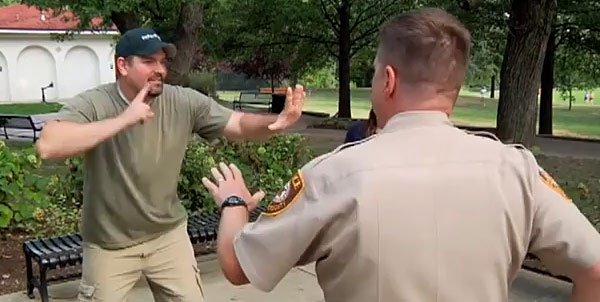
Taking someone into custody is one the most dangerous physical and legal activities an officer performs.
The Marescas presented evidence that the officers pointed loaded guns directly at them, including their children, despite their full compliance with the officers’ orders. Specifically, there is evidence that deputies pointed a gun at C.M., held a weapon close to M.M., pointed a firearm at Mrs. Maresca’s head, and aimed their weapons directly at Mr. Maresca. There is also evidence that the deputies continued to aim their weapons at the Marescas’ vehicle after Mr. and Mrs. Maresca were removed from the vehicle and after the officers had been informed by the Marescas that their children were still in the truck (remember the suggestion by BSD about teenage offenders). The deputies deny these facts. These factual disputes preclude summary judgment for any party.
Under the Marescas version of the facts, which is the version the Court is required to credit at this stage of litigation, a reasonable jury could find that the force used by the officers in pointing their guns at the Marescas, especially the children, after they should have realized a threat did not exist, was excessive under the 4th Amendment. As such, the court denied qualified immunity for all of the deputies involved regarding this issue.
Issue Five: Was the injury to the Marescas de minimus so as to preclude the excessive force claim?
To recover on an excessive force claim, a plaintiff must show:
- The officers used greater force than would have been reasonably necessary to effect a lawful seizure, and
- Some actual injury was caused by the unreasonable seizure that is not de minimis, be it physical or emotional,” 478 F.3d at 1129 n.25.
The Marescas presented evidence that each of them suffered psychological and emotional injury that “significantly exceeded” the de minimus requirement. As such, the excessive force claim can proceed to a jury.
Final Thoughts
Police officers are human beings, and make mistakes. The Federal Courts have routinely recognized that minimal errors that were acted upon with no ill intent will not create a circumstance where an officer is liable for civil rights violations. However, if officers have the opportunity to double-check their information, and fail to do so, the officer’s actions may result in a Constitutional violation. This is particularly true for events that lead to high risk arrest procedures.
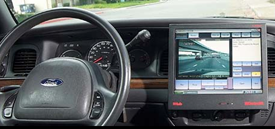
Photo courtesy of Data911.
Deputy Fuentes’ incorrect computer entry would not have risen to the level of a civil rights violation, even if she had made a stop of the Maresca’s based upon that error. Where this case turned against the officers was the fact there were no exigent circumstances that compelled the deputies to take immediate action, and therefore, it was prudent and reasonable for the deputy to check and confirm her suspicion. Since she did not, and the deputies performed high risk arrest procedures on citizens that were completely innocent, the Court ruled the citizens rights had been violated.
In essence, the level of force that results from incorrect information will weigh very heavily on the determination of whether the force was unreasonable, and also if the temporary detention (which can easily tilt in the officer’s favor) turns into a custodial arrest (in the case of incorrect information, will result in a civil rights violation).
In one situation I’m familiar with, an officer spotted a frequent flyer driving, whom he had arrested on several recent occasions. On at least a couple of those arrests the driver had a suspended driver’s license (an offense where arrest is justified in our jurisdiction). Without confirming the suspect’s driving status the officer stopped the suspect in front of his house, informed him he was under arrest, refused to listen to the suspect who tried to inform the officer he had reinstated his license, and subsequently got into a physical altercation with the suspect who attempted to resist the unlawful arrest. When the officer realized the error, the damage was done and he ultimately lost his job for the unreasonable false arrest.
Officers must be even more attentive to details now that there are so many electronic devices in patrol cars. There are plenty of opportunities for an officer to make an incorrect entry that may return with some kind of serious alert. Officers should verify their information with dispatch in all but the most exigent of circumstances. Know the pitfalls of the digital patrol car, and learn to navigate the system in a manner that effectively uses the information, but also double checks the information when a stop or arrest will likely be the result of the information received.